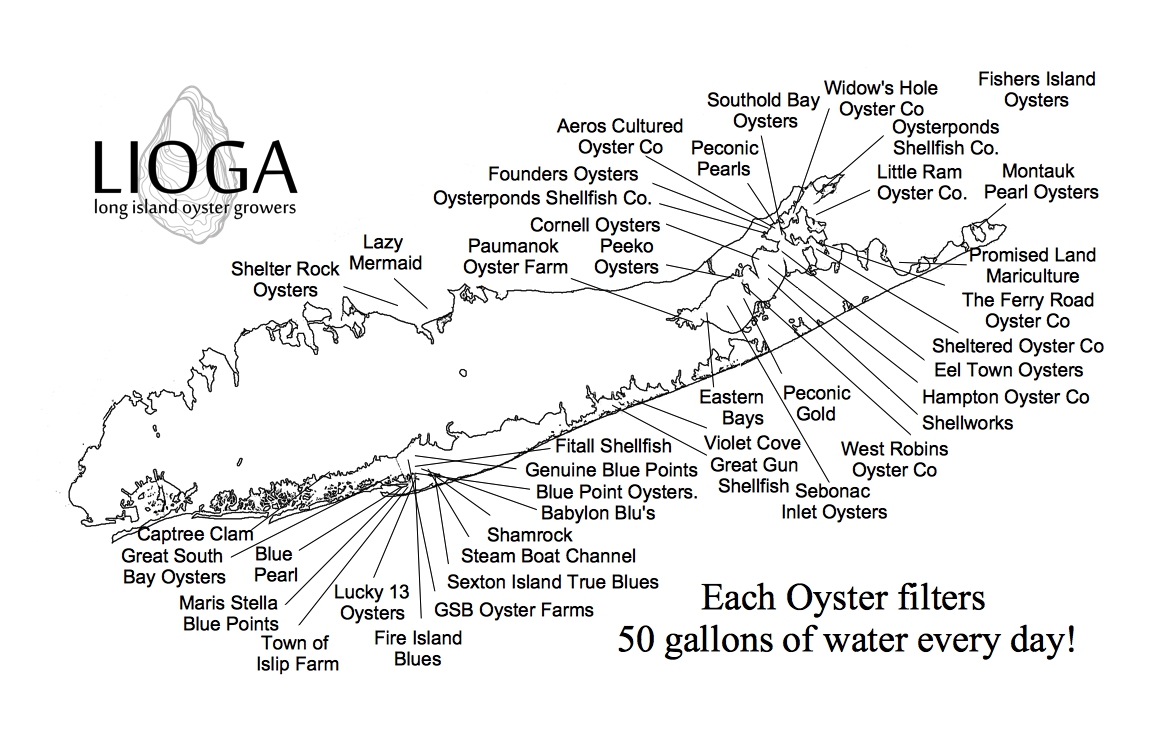Shell-ebrate Oysters!

The Pearls About Oysters
- Oyster Farming has provided the opportunity for two of Long Island's historically traditional industries, farming and fishing, to continue to exist for future generations.
- Oysters and shellfish are full of vitamins and micronutients such as vitamin D, zinc and omega-3 fatty acids that are hard to find in other foods and are essential to our immune health. This is particularly important considering the Covid-19 pandemic.
- One adult oysters filters up to 50 gallons of water per day. A single female oyster can produce up to 50 million eggs. The reproduction process takes place outside of our farm cages. If only 1 in 100,000 survive, in 5 years there will be hundreds of thousands of oysters outside the commercial farm, filtering millions of gallons of our bays, every day.
- Long Island Oyster farms contribute to the removal of more than 192,000 pounds of Nitrogen and more than 57,000 pounds of Carbon from our estuary each year. This greatly improves overall water quality for free to the public. This is the equivalent of Carbon and Nitrogen created by 8,800 humans.
- By removing excess phytoplankton and improving water clarity, cultured shellfish improve light penetration which has proven to help restore eelgrass in areas where it has not existed for decades.
- Removal of excess Nitrogen and Carbon reduces the occurrence and intensity of harmful algae blooms which are major biological and economic catastrophes for the Peconic Estuary.
- Aquaculture gear on the surface and the bottom provides structure that acts as essential habitat for recreationally and commercially valuable marine species such as; black sea bass, porgy(scup), striped bass, blackfish, blue crabs, bay scallops and even the occasional lobster. All for free to the public.
- Many aquatic life forms need a hard, stable floor to which they can attach and grow. The presence of oysters and other shellfish contributes to a solid bottom substrate, which is a perfect environment for mussels, barnacles, anemones, and other organisms to inhabit.
- Spawning oysters in aquaculture provide an opportunity for natural reefs to form which can help reduce coastal erosion and minimize the harmful effects of storm surges.
- Shellfish aquaculture is the most sustainable form of aquaculture on Earth because the farmer does not add food or fertilizer into the water and the shellfish provide a myriad ecosystem services that benefit the public at no cost.
Finan-shell Benefits
- Fresh local oysters have been a key component in the rise of food tourism to the county, which has resulted in a significant increase in tourism to our region. Farmed shellfish are an important part of our local food economy.
- The economic activity generated by Oyster Farming is over the last 10 years is in excess of $9 million.
- Oyster farming on Long Island have increased by 435%. The sale of local farmed shellfish has enhanced the local food economy in our region, through the significant increase of restaurants now offering raw bars that feature locally grown oysters rather than imports from other states.
- There are over fifty new farm operations created in the last 10 years on Long Island.
- Oyster Farming has helped reduce the economic ‘brain drain’ that plaques Long Island by encouraging young entrepreneurs to start businesses and provide good paying jobs to the younger generation of Long Islanders that would otherwise flee the island.
